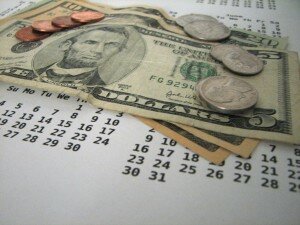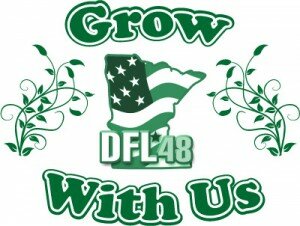CONTRIBUTE! VOLUNTEER! CONTACT US!
Grow with Us Plant Sale!
Get all of your garden needs and help support DFL48! This year, we’re offering you plant cards at both Gerten’s Greenhouses and Garden Center in Inver Grove Heights and Wagner’s Greenhouse in Minneapolis and Bloomington.
Tweets by @DFL48
TAG | poverty
 John Komlos, an economist, writing for PBS.org posted an article on May 4, 2015, titled “Income inequality begins at birth and these are the stats that prove it.”
John Komlos, an economist, writing for PBS.org posted an article on May 4, 2015, titled “Income inequality begins at birth and these are the stats that prove it.”
In the essay, he states that “even conservative Republican Alan Greenspan, an ardent advocate of free markets, is beginning to see inequality as a fundamental threat to the system and admits that,’You cannot have the benefits of capitalist market growth without the support of a significant proportion, and indeed, virtually all of the people; and if you have an increasing sense that the rewards of capitalism are being distributed unjustly, the system will not stand.'”
Mr. Komlos goes on to detail breakdowns in our current system that are causing people to be stuck in poverty from birth to death.
Here’s a link to the complete article.
18
Bill to guarantee school lunch passes unanimously
Posted by SD48 DFL Communications Team in Issues, News, Our Candidates & Elected Officials
Thanks, Rep. Selcer, for your work on this bill. No child should be forced to try to learn when hungry. You can read more here.
bipartisan · free lunch for low income children · HD48A · House District 48A · poverty · Rep. Selcer · Yvonne Selcer
By Nicole Goodkind, Yahoo Finance, January 17, 2014
It’s a counterintuitive idea to say the least, but it costs a lot to be poor in the United States. When money is at its tightest, cost-saving choices are often impossible to make, digging impoverished Americans deeper and deeper into the pit of day-by-day living.
A common narrative in today’s political arena is that the nation’s least fortunate only need to pull themselves up by their bootstraps – that they’re just not working hard enough. What often goes unnoticed, however, are the overwhelming barriers that those living below the poverty line face on a daily basis.
A car, for example, is a necessity for many jobs but the down payment can be insurmountably high. And even after the down payment poor drivers still face monthly payments, high gas prices, and the fact that low-income car buyers pay 2% more for a car loan than affluent people. Low-income drivers can also pay up to $400 more annually than wealthier drivers to insure their cars (for a car of the same model and with the same driver risk).
A lack of capital can also make it impossible to afford the security deposit on an apartment causing those in poverty to live day-to-day in expensive hotels. Chris Arnade, a friend of The Daily Ticker, has documented this phenomenon. Those in poverty who are able to rent or buy homes are also more likely to get household appliances through rent-to-own companies and end up paying more due to added interest.
Even saving money is a burden for the poor, as banks often charge large fees for those who don’t have a minimum amount of capital in their accounts—this makes cash checking establishments, who charge incredibly high interest rates on pay-day loans, the only choice for many.
Ben Hecht, CEO and president of Living Cities, an organization that works to revitalize impoverished areas, joined The Daily Ticker to discuss why it costs so much to be poor.
“Many of us are salaried employees and many poor people, if they’re working, are hourly employees,” explains Hecht.
If you’re an hourly employee who needs to apply for benefits or even see a doctor, you’re missing out on vital pay, Hecht points out.
Another challenge that low-income Americans face is a lack of services. “If you walk in many neighborhoods they’ll have one store—it may even be a corner store and not a grocery store,” Hecht says. The competition that neighborhood stores typically face doesn’t exist in poorer areas, allowing them to charge more for goods.
High quality food and produce is also often hard to come by. “You can’t find fresh broccoli…and if you think about it, it’s a logical, rational and economic choice for people to pick fast food in cheaper and larger quantities,” Hecht explains. This leads to obesity and other health issues that end up costing individuals more down the line.
“In many cities there are food deserts where you can’t even go to get the fresh food that we’re used to everyday,” Hecht says.
One of the biggest disadvantages that those in poverty experience is a lack of broadband Internet. “One of the fundamentals about poverty is a lack of access to economic opportunity,” says Hecht. “And we all know that the number one factor in economic opportunity is education and we know that in today’s world much education, even in public schools, is done online.”
Furthermore, the Internet provides social networks where we can exchange vital information. Hecht gives this example: “I gave a speech years ago to 500 folks who helped people get jobs and I said to them — how many of you got your job by a reference? All of them. How many of you got your doctor by reference? All of them. The power of those networks is being shut out in these neighborhoods and without the access to those types of technology.”
View original article here.
impoverished Americans · poverty · pull themselves up by their bootstraps
13
Inequality Starts Early in Minnesota
by Michael Diedrich, Education Fellow, at Minnesota 2020, published December 16, 2013
 Almost one in every five Minnesotan children under the age of 6 lives in poverty, and children of color are about three and a half times more likely to live in poverty than white children. Public services at their current levels are not up to meeting the needs of all the students and families who require them. These are some of the key conclusions from Minnesota’s School Readiness Report Card,released in October by the Wilder Foundation (and given a recent signal boost by MinnPost’s Cynthia Boyd).
Almost one in every five Minnesotan children under the age of 6 lives in poverty, and children of color are about three and a half times more likely to live in poverty than white children. Public services at their current levels are not up to meeting the needs of all the students and families who require them. These are some of the key conclusions from Minnesota’s School Readiness Report Card,released in October by the Wilder Foundation (and given a recent signal boost by MinnPost’s Cynthia Boyd).
When they say “poverty,” they mean it. They’re using the federal poverty line, as opposed to the “low-income” definition typically used in education, which reaches up to 185% of the poverty line. The number of children who meet that definition is nearly twice as high. (Roughly 18% of children are below the poverty line, roughly 34% are below the 185% line). Seven out of every ten black Minnesotan children live below that 185% line, compared to one out of four white Minnesotan children.
With these income disparities come other problems. Many children growing up in poverty don’t have access to the health care they need (nor do their caregivers). They are more likely to experience damaging levels of toxic stress. They are also more likely to be born earlier, which can have long-term developmental effects.
The end result of all this is two out of every five Minnesotan children showing up to kindergarten without the necessary knowledge, skills, and development to succeed. Again, racial disparities appear — 44% of Latino and American Indian kindergartners show up prepared, while 63% of white kindergartners do.
The truly depressing conclusion from the Wilder report is that our public services simply are not up to meeting the demand. Head Start and Early Head Start only have enough space for one out of five eligible children. Some counties have long waiting lists for child-care subsidies. While Minnesota has one of the highest enrollment rates in the nation for families eligible for Women, Infants, and Children (WIC) assistance, it’s still missing a quarter of eligible families.
We’ve started increasing our investments in early childhood, but it’s clear we still have a long way to go. In addition to the state’s Parent Aware rating system and scholarships for early childhood programs, we need to meet a broader range of families’ health and education needs, keeping an emphasis on the whole child.
View the original post here.
By Caitlin Biegler, the Minnesota Budget Project, January 9, 2014
A new report from the U.S. Census Bureau shows that many Americans have lived in poverty at some point.
From 2009 to 2011, almost one-third of Americans lived in poverty for at least two consecutive months. This is an increase from the pre-recession rate of 27.1 percent in 2005-2007.
People are also living in poverty longer. The median length of time spent in poverty was 6.6 months during 2009-2011, an increase of almost a month from the 2005-2007 rate. However, while the time spent in poverty increased, 12.6 million people who were living in poverty in 2009 were out of poverty in 2011.
The report also shows poverty was more prevalent in some communities of color. From 2009 to 2011, one-quarter of non-Hispanic white Americans lived in poverty for at least two consecutive months, but nearly half of Hispanic Americans and 45.3 percent of Black Americans lived in poverty. They were also more likely remain in poverty throughout the 2009-2011 period.
The report uses data from the Survey of Income and Program Participation, which gives us information on the number of months spent in poverty, rather than the yearly rate that we get from the American Community Survey.
The new Census report only includes national data. In Minnesota, poverty is lower than the national figures, but we see the same problem of economic well-being not reaching into communities of color. While Minnesota’s overall poverty rate was 11.4 percent in 2012, 37.8 percent of Black Minnesotans and 31.9 percent of American Indian Minnesotans lived in poverty.
The good news is that public policies can make a difference in reducing poverty. Federal policymakers should extend Emergency Unemployment Insurance and protect basic nutrition assistance through SNAP from federal cuts. On the state level, policymakers can improve the economic security of Minnesotans in the upcoming 2014 Legislative Session by strengthening the Working Family Credit and continuing to improve access to affordable health care.
 DFL48
DFL48